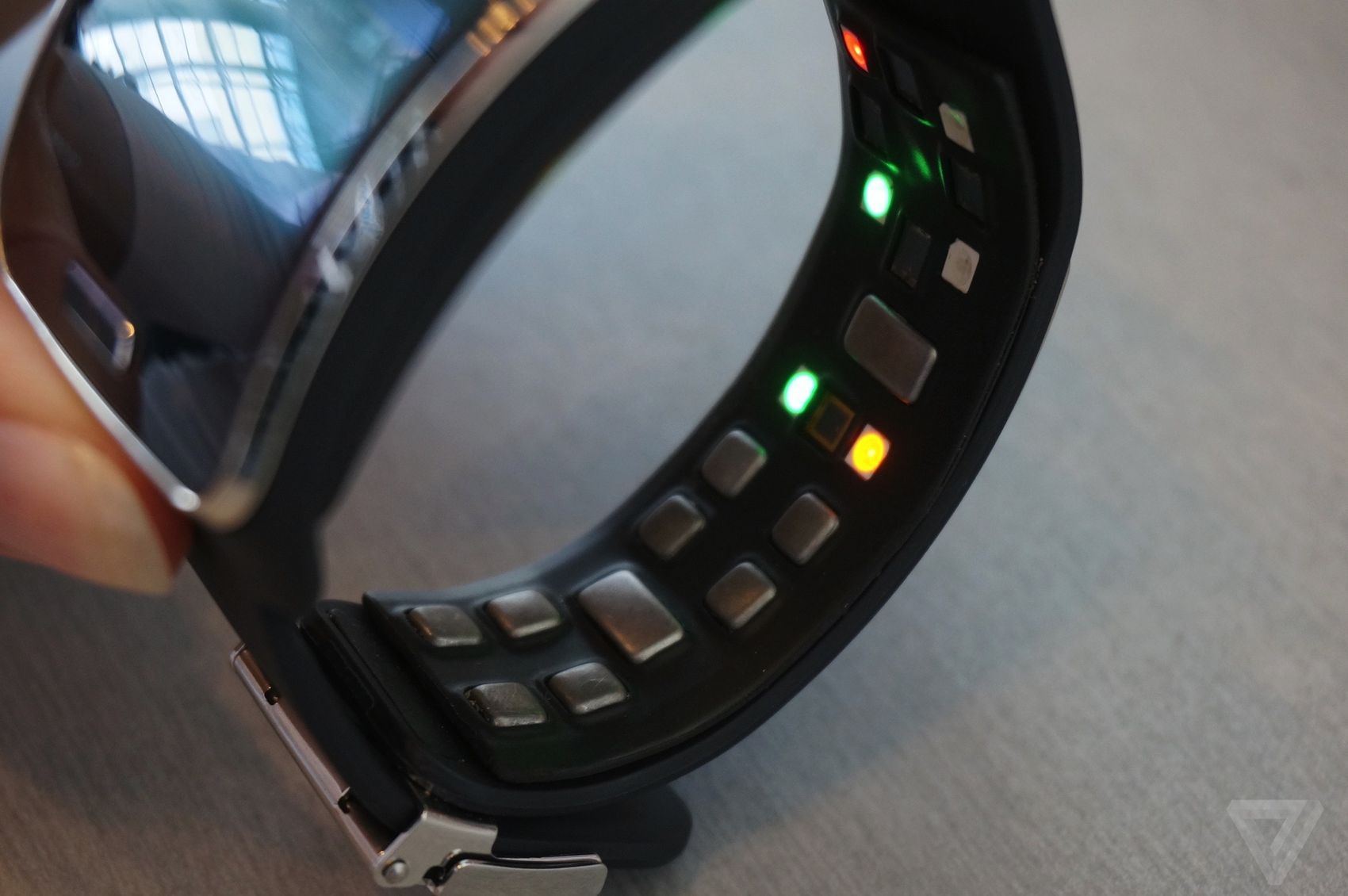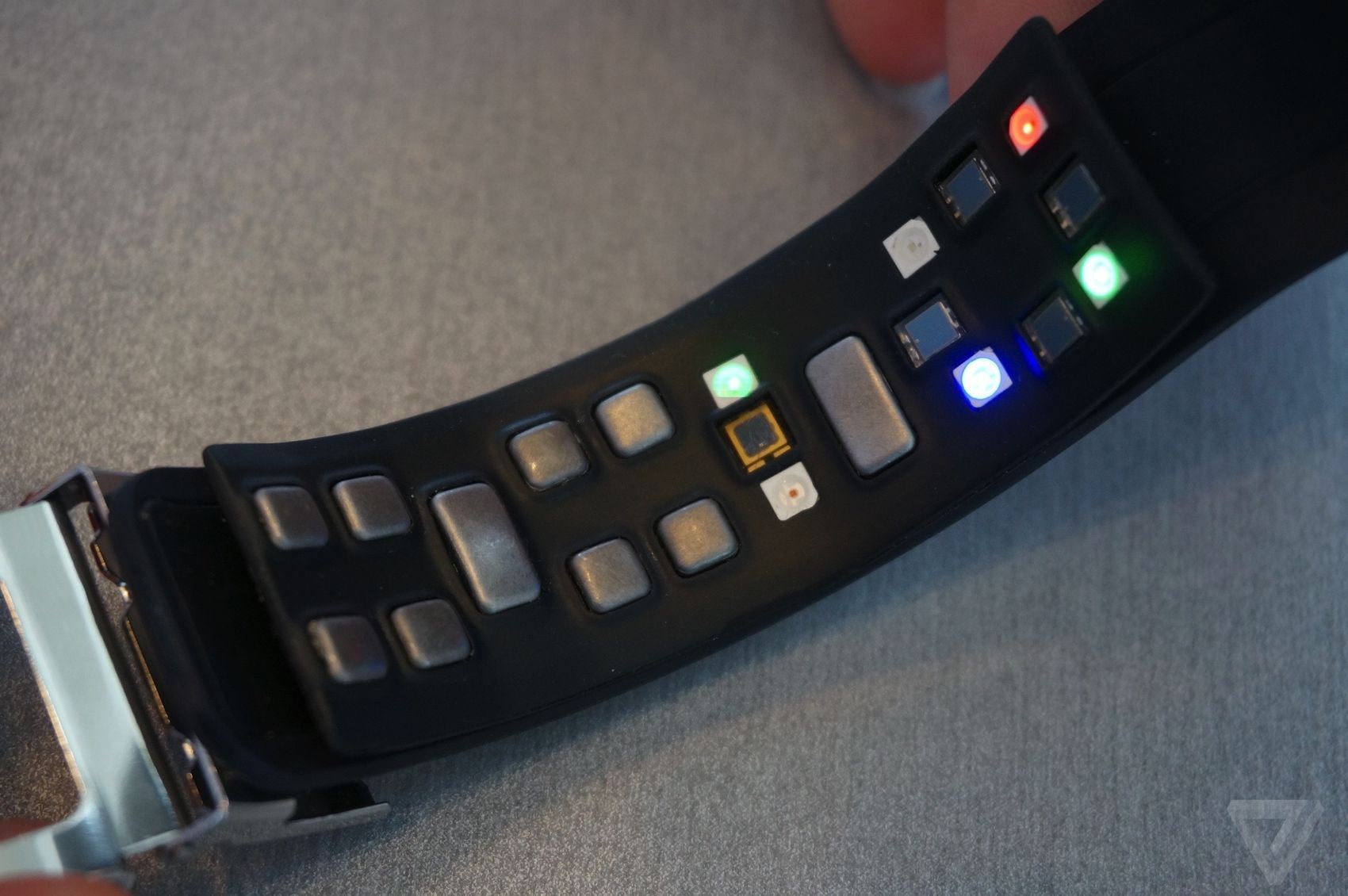Affiliate links on Android Authority may earn us a commission. Learn more.
Samsung Simband is a health oriented Gear S on steroids
Published onNovember 13, 2014

Samsung is ready to release yet another smartwatch. Well, kind of. Called the Simband, this modified Gear S will allow developers to take fitness tracking to an unprecedented new level, at least should things go well. Built into an unassuming Gear S, things get interesting when you take a look at its band, complete with a dizzying array of sensors. The device, along with its accompanying SAMIIO software, was announced back in late May, with limited developer distribution. Now things are opening up to a larger audience, though the device is still limited to programmers.
Unlike a standard smartwatch that can do positively normal things like say, make phone calls, compose text messages, and play music, this bedazzling piece of hardware can do seemingly anything. Let’s take a look at each of the modular main sensors built into the wrist strap:

Electrocardiogram (EKG) sensor: This monitors the heart’s functioning and could be used to detect or monitor conditions such as arythima or angina. It could also, possibly, be used to detect a potential heart attack in progress should the sensor and software be accurate enough.
Bioelectrical Impedance (Bio-Z) sensor: This essentially allows the user to perform a BMI analysis by running an electrical current through the body.
Photoplethysmogram (PPG) sensor: This impressive sounding word means that the device can monitor your pulse and blood pressure via light sensors.
Galvanic Skin Response (GSR) sensor: This is used to eventually measure sweat responses and can be used in both fitness and psychological situations.
Accelerometer: This measure G-Force and can be used to detect motion and movement.
Skin Temperature sensor: This can, obviously, measure the temperature of the skin.

The inclusion and potential usage of just one of these sensors is quite impressive, but to consider all of them are present on the prototype device is quite amazing, as is the idea that they can be swapped out and replaced, perhaps with even more.
It remains to be seen as to what will ultimately become of this project, however based on what we know so far, as well as Samsung’s own page dedicated to educating interested programmers about this “public beta”, the future looks to be quite healthy indeed.